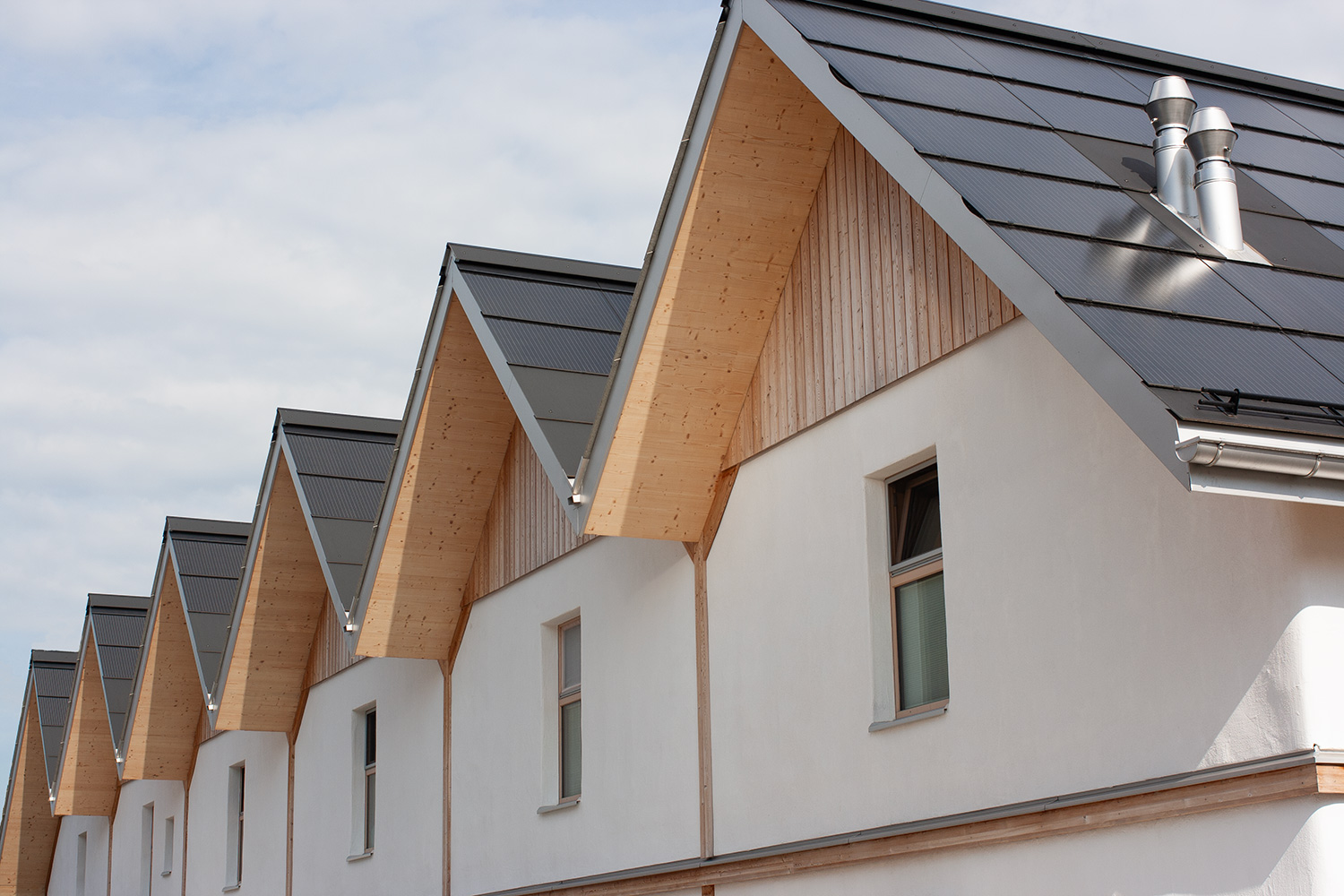Designing with passive strategies
General description
This practice promotes design that works with the local climate to maintain a comfortable indoor-temperature. It should reduce or eliminate the need for additional heating or cooling depending on location and seasons. For example, the right orientation of a building in combination with placing the windows according to local light situations as well as making the best use of material properties can have significant effects on the energy consumption of a building during its use phase and mean less materials used for installations.
Examples
Bombasei Areal
Nanikon, Switzerland
In an interview, architect Paul Schmidt explains that the walls follow the metaphor of a sleeping bag. Why does a room need heating to make it inhabitable? By introducing 90 cm thick exterior walls insulated with straw, no heat is lost from the building and also there is a cooling factor in summer. “So far we don’t know whether it is profitable or not. But if heating costs increase in 10-20 years, it will definitely be worth it” said Schmidt. Moreover, the energy produced by the PV system on the roof can possibly heat the entire building without purchased energy, even in winter.